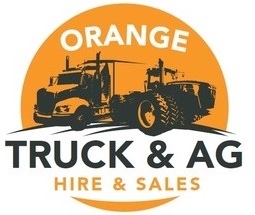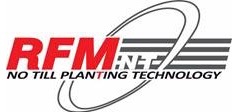Aus Ag: the path to $A100 billion - part 1
- By: "Farm Tender" News
- Hay & Fodder News
- Nov 24, 2019
- 660 views
- Share

This article is bought to you by Orange Truck & Ag and RFM No Till.
By Mark Bennett & Madeleine Swan - Head of Agribusiness & Associate Director Agri Research, ANZ
In 2016-2017 Australia's agriculture production hit a record high off the back of a strong season and commodity prices. Recent output has been driven not only by good seasons but also by structural changes to the industry including strong productivity growth through new technologies, farm consolidation and positive global commodity markets.
However, more recently, productivity growth has been challenged by a number of factors namely the drought occurring across much of eastern Australia and an uncertain geopolitical and trade outlook.
"On current trends alone, ANZ research suggests Australia's agriculture industry will only reach $A67.4 billion by 2030 - around $A32.6 billion short of aspirational targets."
Australia has an ambitious plan to achieve an $A100 billion agri industry by 2030. In developing this plan, recent trends should be considered and the size of the challenge should be put into context.
On current trends alone, ANZ research suggests Australia's agriculture industry will only reach $A67.4 billion by 2030 - around $A32.6 billion short of the aspirational target.
To reach such a high target requires a combination of favourable global commodity prices driven by global economic growth and, more importantly, constant growth in on-farm productivity. Producers will also need to continue to innovate, consolidate and invest.
Labour, technology and capital
Productivity in Australian agriculture has come largely as a result of a decrease in labour use and an increase in technology and capital. While productivity growth in Australian agriculture was strong in the 1990s and 2000s, growth has slowed during the past decade as large gains made through new on-farm technology and uptakes during that period haven't been replicated. In the past five years, productivity growth has on average declined 0.7 per cent per year - compared with strong growth of 3.5 per cent in the previous five years.
Ad - Used Machinery buying opportunities at Orange Truck & Ag. We also rent - Ad
Ad - RFM No Till is revolutionary Planting Technology - Purchase now or defer your payment and save. RFM No Till is a DelayPay supplier - Ad
ANZ's report, AgTech - Advance Australian Agriculture, explored the role of agtech in growing the Australian industry. It highlighted that in order to reach the $A100 billion target by 2030, the industry would need to achieve productivity growth of 3 per cent per annum as well as continue to attract increasing levels of new capital into the industry.
A recent review of the modelling shows this challenge remains, with productivity growth of 3 per cent still required, as well as 2 per cent capital growth per annum to reach the $A100 billion target. While this appears to be a significant challenge, it is by no means unprecedented for the Australian industry to improve productivity by an average of 3.5 per cent - given the right circumstances.
The agtech report also found since 1995-96, 62 per cent of increases in productivity can be attributed to consolidation leading to greater access to technology. Meanwhile, for every 1 per cent increase in capital in the agriculture industry, there is a 1.5 per cent increase in technology-based productivity gains.
Large farms
The progression of Australian agriculture into a $A60 billion industry has seen significant structural changes - particularly the overall decline in the number of farming enterprises and the rise in the number of large broadacre farming enterprises.
The rise in large farms - or farms with a turnover of more than $A1 million - can partly be attributed to increases in commodity prices. The ongoing trend towards fewer, larger farms is a major driver of increased industry production.
The Australian Bureau of Agricultural and Resource Economics and Sciences (ABARES) farmer survey finds larger farms tend to be more profitable and productive across broadacre farming.
The largest 10 per cent of farms produced just under half of total output and the smallest 50 per cent produced just over 10 per cent in the three years to 2017-18. Larger farms are also generally more profitable, with the average rate of return for the smallest 10 per cent of broadacre farms at -1.6 per cent compared to a return of 9.3 per cent for the largest broadacre 10 per cent.
Achieving the $A100 billion industry target based on ongoing farm consolidation implies the need for a continuing reduction in farm numbers. On trend, the number of broadacre farms in Australia is set to decline by 16,800 by 2030.
Farm-gate returns
Reaching production output of $A100 billion will rely heavily on produce achieving strong farm-gate return. However, as farm-gate returns are often offset by increases in costs, there may not necessarily be a vast improvement for farmers' bottom lines.
For many years, farmers' terms of trade (income v costs) has remained at historically low levels having reached its low in 2009, before starting to improve in recent years due to strong commodity price increases. For many years until 2014, commodity price increases have been matched by cost increases - particularly costs of replacement stock, insurance, fuel and electricity. Total on-farm production costs have also increased at a lesser rate than prices based on seasonal variabilities.
On current trends in commodity price movements, the prices received by Australian farmers could increase by 39 per cent by 2030, while total production volume would increase 22 per cent.
Ad - Used Machinery buying opportunities at Orange Truck & Ag. We also rent - Ad
Ad - RFM No Till is revolutionary Planting Technology - Purchase now or defer your payment and save. RFM No Till is a DelayPay supplier - Ad
When it comes to commodity price increases, much of this benefit to farmers can be eroded by increases in the Consumer Price Index or input costs. As a result, the path to $A100 billion which would most benefit the agriculture industry stems from increased production through on-farm productivity.
Good or bad debt
The 2012 ANZ and Port Jackson Partners report, Greener Pastures, outlined the extent of the challenge for industry to attract new capital, including finding sources of capital which were external to traditional bank debt.
The increase in the agriculture industry's size until now has been strongly associated with increases in farmer debt levels. There is, however, an important distinction to be made between 'good debt' or debt which adds to the productive capital base of the farm and industry as a whole, and 'bad debt' which is typically seen as debt which is taken out to cover drops in income in times of drought or poor seasonal outcomes.
Importantly, for both small- and medium-sized farms there is a negative correlation between debt by farm turnover size and profitability.
A decline in annual profits is very likely to occur in the same year as an increase in debt - suggesting small and medium sized farmers are likely to use debt to cover poor profit outcomes. In contrast, large farmers are less than half as likely to take out debt to cover poor profit outcomes.
While these figures are not definitive, they are also a clear indication larger farms are more likely to take out debt for reasons other than cash-flow, such as capital investment.
Part two of this series will investigate how commodity prices and trade opportunities may help Australia reach its $A100 billion target by 2030.
Mark Bennett is Head of Agribusiness and Madeleine Swan is Associate Director for Agri Research at ANZ
This article is adapted from a submission made by ANZ to the Australian Government's Standing Committee on Agriculture and Water Resources and has been published with permission.
The views and opinions expressed in this communication are those of the author and may not necessarily state or reflect those of ANZ.
Ad - Used Machinery buying opportunities at Orange Truck & Ag. We also rent - Ad
Ad - RFM No Till is revolutionary Planting Technology - Purchase now or defer your payment and save. RFM No Till is a DelayPay supplier - Ad












Share Ag News Via